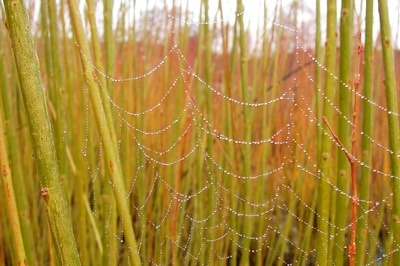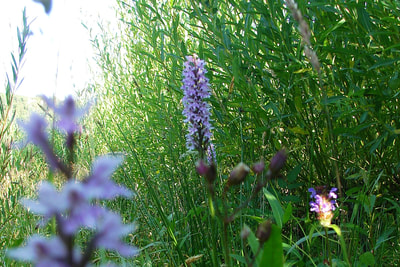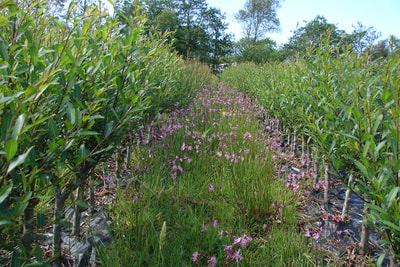Willow & The EnvironmentWillow beds provide a natural habitat for many insects, birds and beasties.
In the first years after planting it's important to keep the vegetation down around new pegs. However, after a few years the willow holds its own and we can hold back on the strimming allowing a profusion of flowers to thrive in the spring and early summer. As May arrives it is fabulous to have so many wildflowers between the beds. Walking the beds is pure pleaseure with an ever growing mix of species. Later in the year, when cutting begins, I love to sit hidden within the willow rows where a pet robin usually finds me and waits for the bird feed he knows is in my pocket. Alongside this, one of the most significant environmental benefits of willow beds is their contribution to carbon capture. Fast growing willow absorbs huge amounts of carbon dioxide. Unlike trees in natural woodland, which eventually die and release carbon back into the atmosphere as they decay, willow turned into baskets effectively captures carbon in a beautiful, useful object. If treasured, a willow basket will contribute to a net carbon reduction. Last updated: July 2021 |
















